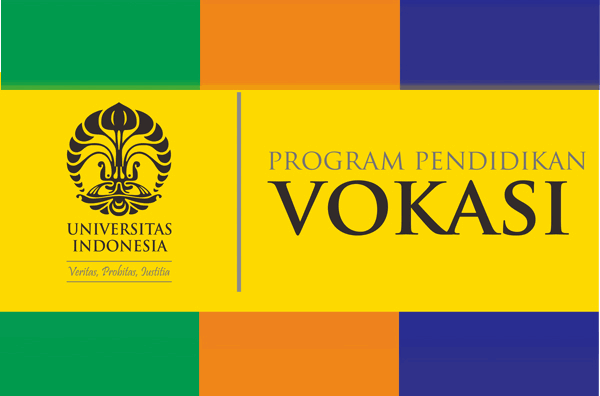Jurnal Fisioterapi Terapan Indonesia
Abstract
Osteoarthritis (OA) is a degenerative disease that mainly attacks the joints and surrounding tissues, causing progressive damage to cartilage, subchondral bone and synovial structures. Genu OA is the most common OA and can cause disabilities that interfere with daily activities, reduce quality of life and increase the risk of falls. Physiotherapy intervention for genu OA can be conducted using various methods, one of them is backward walking exercise. The study is a quasi experimental research using two group pre and post-test control group design. The aim of the research is to determine the effect of backward walking exercise on pain and functional ability in patients with genu OA. The pain scale was measured using the Visual Analog Scale (VAS) and the patient's functional ability was measured using the Physical Function using Western Ontario and McMaster Universities Arthritis Index (WOMAC). The samples were all patients who had been diagnosed with Genu OA and met the predetermined inclusion and exclusion criteria. The samples were divided into 2 groups, the intervention group and the control group. Each group will receive the same physiotherapy intervention, but the intervention group was given additional intervention in the form of backward walking exercises. Backward walking exercise was conducted 2 times a week for 4 weeks. Before administering the exercise, each patient measured their pain scale and functional capacity. The measurement was done again after 8 interventions. The results showed that patients in the intervention group experienced a significant increase in functional ability (p=0.003) and a significant reduction in pain (p=0.000). In the control group there was also a significant increase in functional ability (p=0.000) and pain reduction (p=0.000). However, there was no significant difference in results between the control group and the intervention group in terms of functional ability (p=0.135) and pain level (p=0.490)
References
1. Kan HS, Chan PK, Chiu KY, Yan CH, Yeung SS, Ng YL, et al. Non-surgical treatment of knee osteoarthritis. 2019;127–33. 2. Giorgino R, Albano D, Fusco S, Peretti GM, Mangiavini L, Messina C. Knee Osteoarthritis : Epidemiology , Pathogenesis , and Mesenchymal Stem Cells : What Else Is New ? An Update.2023; 3. Royal S, Jakarta T, Budiman NT, Widjaja IF. Gambaran derajat nyeri pada pasien osteoarthritis. 2020;2(2):372–7. 4. Kertia N, Wachid DN, Krishnan PN. Diagnostic criteria of knee osteoarthritis in rheumatology outpatient clinic , Dr . Sardjito Hospital , Yogyakarta. 2011;03:24–6. 5. Baby E, Thachil A. Effectiveness of Retro Walking in Women with Osteoarthritis of Knee. 2022;12(March):326–45. 6. Kogilavani R, Velkumar V, Shanmugananth E. Effectiveness of Retro Walking Exercise Versus Core Stability Exercise for Coastal Patients with Osteoarthritis of the Knee – A Randomized Active Control Study Keywords : 2023;11(December 2022). 7. Am B, Rk K, Kamraj B, Vt S. Physiotherapy & Physical Rehabilitation Impact of Retro- Walking on Pain and Disability Parameters among Chronic Osteoarthritis Knee Patients. 2018;3(2). 8. Wadhwa DN, Hande DN. Effects of Retrowalking on Osteoarthritis of Knee in Geriatric Population. 2016;3(2):37–43. 9. Chen Z, Ye X, Wang Y, Shen Z, Wu J, Chen W, et al. The Efficacy of Backward Walking on Static Stability , Proprioception , Pain , and Physical Function of Patients with Knee Osteoarthritis : A Randomized Controlled Trial. 2021;2021. 10. Shabbir S, Hashim M, Sajjad R, Kayani MS, Syed FALI, Ibrahim M, et al. Effects of Retro- Walking on Pain, Functional Disability and Performance in Knee Osteoarthritis. 2022;16(02):38–41. 11. Sumathi G, Ramamoorthy V, Surekha K, Gomathi P. Effect of Therapeutic Exercise Vs Retro Walking In Individuals with Knee Osteoarthritis. 2019;9(June):130–6. 12. Wu Y, Lei C, Huangfu Z, Sunzi K, Yang C. Effect of backward walking training on knee osteoarthritis : protocol of a systematic review and meta- • analysis. 2020; 13. Almutairi SM, Almutairi MK, Alotaibi MM, Alshehri M. Effects of backward walking exercise using lower body positive pressure treadmill on knee symptoms and physical function in individuals with knee osteoarthritis : a protocol for RCT . J Orthop Surg Res [Internet]. 2023;1– Available from: https://doi.org/10.1186/s13018-023-03711x 14. Kajale MD, Rais S, Rizvi A. Comparison of Effectiveness of Forward Walking vs Retro Walking on Pain and Function in Patients with Postmenopausal Osteoarthritis of Knee. 2022;7(June):295–304.
Bahasa Abstract
Osteoarthritis (OA) merupakan penyakit degeneratif yang terutama menyerang persendian dan jaringan di sekitarnya yang menyebabkan kerusakan progresif pada tulang rawan hingga pada tulang subkondral dan struktur synovial. OA Genu adalah OA yang paling sering terjadi dan dapat menyebabkan disabilitas yang mengganggu aktivitas sehari hari, menurunkan kualitas hidup dan meningkatkan risiko jatuh. Intervensi fisioterapi pada OA genu dapat dilakukan dengan berbagai metode, salah satunya dengan backward walking exercise. Penelitian ini merupakan penelitian quasi eksperimental dengan menggunakan desain penelitian two group pre and post-test control group design, dengan tujuan untuk mengetahui pengaruh backward walking exercise terhadap intensitas nyeri dan kemampuan fungsional pasien dengan OA genu. Skala nyeri diukur menggunakan Visual Analog Scale (VAS) dan kemampuan fungsional pasien diukur dengan Physical Function using Western Ontario and McMaster Universities Arthritis Index (WOMAC). Sampel pada penelitian yaitu semua pasien yang telah terdiagnosis OA Genu dan memenuhi kriteria inklusi dan eksklusi yang telah ditetapkan. Sampel akan dibagi menjadi 2 kelompok, kelompok intervensi dan kelompok control. Masing-masing kelompok akan menerima intervensi fisioterapi yang sama, namun pada kelompok intervensi akan diberikan tambahan intervensi berupa backward walking exercise. Intervensi fisioterapi diberikan sebanyak 2 kali dalam sepekan selama 4 pekan. Sebelum pemberian latihan tersebut, masing-masing pasien akan diukur skala nyeri dan kapasitas fungsionalnya dan akan diukur kembali setelah 8 kali intervensi tersebut. Hasil penelitian menunjukkan pasien pada kelompok intervensi mengalami peningkatan kemampuan fungsional (p=0,003)dan penurunan nyeri secara signifikan (p=0,000). Pada kelompok kontrol juga terdapat peningkatan kemampuan fungsional (p=0,000) dan penurunan nyeri secara signifikan (p=0,000). Namun, tidak terdapat perbedaan hasil yang signifikan antara kelompok kontrol dan kelompok intervensi dalam hal kemampuan fungsional (p=0,135) dan tingkat nyeri (p=0,490).
Recommended Citation
Khumaerah, Aulia; Yusfina, Yusfina; and Tenriola, Andi
(2023)
"Pengaruh Backward Walking Exercise Terhadap Nyeri Dan Kemampuan Fungsional Pasien Osteoarhtritis Genu,"
Jurnal Fisioterapi Terapan Indonesia: Vol. 2:
Iss.
2, Article 15.
DOI: 10.7454/jfti.v2i2.1094
Available at:
https://scholarhub.ui.ac.id/jfti/vol2/iss2/15








